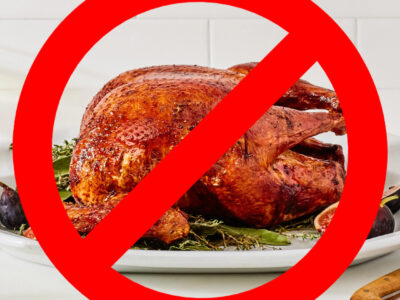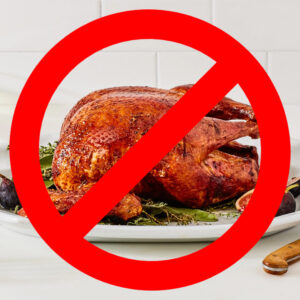New This Thanksgiving: Toxic Turkey
Legal Planet: Environmental Law and Policy 2024-11-28

As Americans gather to celebrate the harvest’s bounty, there are few revelations about our food supply more distressing than the 2024 news that sewage-derived fertilizer has contaminated millions of acres of U.S. cropland with toxic PFAS chemicals. Marketed as “biosolids” that enhance soil productivity, the voluminous outputs from wastewater treatment plants have poisoned productive lands from the Northeast to the Midwest to the South, rendering many farms’ meat, milk, and produce too hazardous to sell.
But sadly, it gets worse. Just in time for the holidays, Maine issued a “Do Not Eat” advisory to hunters, warning that in six state townships, they should avoid consuming their kill of: Turkey.
Once nearing extinction from overhunting and habitat loss, wild turkeys are an all-American rebound story. Cooperation between conservation organizations and government, at a cost of nearly a half-billion dollars in private funds alone, has not only brought these birds back from the precipice but made them so plentiful that they roam residential streets from Boston to the Bay Area. But in Maine (and likely, as-yet-untested elsewheres), wild turkeys have also apparently grazed near contaminated fields, and are no longer safe to eat at Thanksgiving.

How on earth did we get here? And where do we go now?
States are deploying a range of sensible risk management strategies to address PFAS on farmland, including testing soils for toxicity, removing contaminated lands from food production, and making relief payments to farmers with unsaleable crops. But these efforts will at most be stopgaps as long as we fail to turn off the national tap of PFAS production upstream: there is no way for taxpayers to do on the back end what protective policy should do on the front.
Here, it’s worthing running the numbers to see just how unsustainably expensive our PFAS remediation predicament has become, even leaving aside the medical and moral costs of caring for already-PFAS-impacted communities. With respect to drinking water, risk insurers have estimated that cleaning up 30 PFAS chemicals currently subject to litigation will cost at least $120 billion—an amount roughly equal to the annual U.S. transportation budget. For the mere 6 types of PFAS that EPA has determined to regulate in drinking water, the agency pegs treatment costs at over $1.5 billion per year.
Adding to that sum end-of-pipe treatments for wastewater streams that produce biosolids makes the cleanup tab still more staggering. Minnesota estimates that removing PFAS from its wastewater could cost up to $28 billion in the next two decades, a figure that represents nearly half of the annual Minnesota state budget. And it must start from a zero base: currently, not a single municipal wastewater facility has infrastructure capable of removing PFAS. Minnesota’s contemplation and monetization of wastewater treatment is at once laudable and absurd. It calls to mind Lewis Caroll’s Walrus and Carpenter, discussing whether a beach could be rid of sand “if seven maids with seven mops swept it for seven years.”
Further, even if we could remove PFAS from the nation’s drinking water and wastewater on the back end, we have as yet no way to render these chemicals safe for disposal. It would seem commonsensical that before allowing new chemicals into the market, regulators would require manufacturers to demonstrate either a path of natural degradation or a viable mechanism for destruction. But instead, these questions are only now being posed via an EPA “innovation challenge,” in which the agency is endeavoring to crowdsource technologies for decomposing PFAS. Meanwhile, U.S. manufacturers continue to be allowed to produce PFAS at the rate of over a half-trillion pounds per year.
Although the recent election bodes poorly for federal chemicals policy, there remains at least a remote possibility that the intensity of PFAS concern among traditionally conservative constituencies—military families near bases contaminated by PFAS fire-fighting foam, farmers affected by PFAS-laden biosolids, and now also, apparently, game hunters—could limit regulatory backsliding as to this consequential class of chemicals.
In the meantime, the waning Biden Administration has one last opportunity to move PFAS policy forward. In December, EPA is slated to issue a “biennial review” under the Clean Water Act that specifies which chemicals in biosolids should be labeled toxic pollutants and prioritized for regulation. EPA’s failure to do so for PFAS thus far is the gravamen of a well-crafted pending lawsuit against the agency, filed by Public Employees for Environmental Responsibility. The forthcoming review document, sure to be at play in the litigation, would be the right place for EPA to make a public commitment to a safer U.S. food supply and frame it in bipartisan terms, while falling short of a final regulation reversible under the Congressional Review Act. Stay tuned to see whether President Biden can do more for Thanksgiving turkeys than pardoning Peach and Blossom.